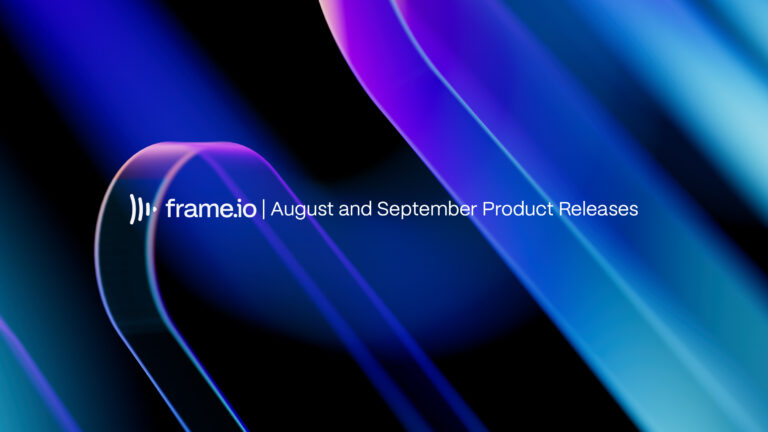When we look back at 2020, we’ll remember it as the year when everything changed. Phrases like “social distancing” and “shelter-in-place” became part of our daily vocabulary. And working from home became the new normal.
The truth is, a lot of us had already been working from home or, more accurately, working with remote teams in film and video post-production—and in those terms, remote workflows have evolved over time.
We developed Frame.io as a cloud-based video work-sharing platform five years ago—not because we planned for people to be forced to work remotely, but because we wanted to enable the kind of creative partnerships that can happen when things like time zones and distance become irrelevant.
We talk a lot about Frame.io functioning as the connective tissue that connects creators with their content, and we’ve seen the results from our many customers who’ve used Frame.io for every step of the process from concept to delivery.
As you dig into the Frame.io platform, you’ll notice that its functionality goes deep. We’ve optimized it to accommodate all file types and codecs, integrated it with all the major professional NLEs, and provided the kind of industry-leading security that our large studio and broadcast customers require. So, in a way, everything we’ve been doing has uniquely positioned us for this moment.
That’s why today we’re launching a new multi-part video series called “Workflow From Home” that’s specifically designed to help teams who’ve been working in brick-and-mortar facilities quickly transition to a remote workflow.
Our goal is to identify the steps and dive deep into how you can shift from an on-premises workflow with centralized network storage to one that’s based either partially, or entirely, in the cloud.
Over the course of this ongoing series, we’ll cover a little bit of everything from editing, to visual effects, to conforming, color grading, and mastering to demonstrate how they may be possible in the cloud.
We’ll start establishing some ground work by highlighting the differences between entirely cloud-based and hybrid cloud workflows, and why one or the other may be more applicable to your situation.
From there, we’ll get into the how-tos: how to determine your internet bandwidth, how to upload and organize your assets in Frame.io, how to share assets and collaborate with your team, how to relink to original camera files—basically everything you’ll need from start to finish.
And we’re bringing in industry pros and sharing screen grabs and downloadable reference guides to make everything as easily digestible (and immediately actionable) as possible.
We’ll post the episodes on our YouTube channel as we release them and, once the series is completed, you’ll be able to access the full series through our website.
I’ve personally worked in the motion picture sector of the industry for decades, so I understand the intricacies of building a highly secure, centralized workflow, and how that presents specific challenges for teams.
The good news is that we’re all experiencing the same pressure to make a transition, and as we explore options together, we’ll all have a deeper understanding of remote workflow options that may not solve every issue, but will help enable greater collaboration and creative freedom going forward. Especially for teams who collaborate with other creative entities, like VFX houses, DI facilities, and audio studios, centralizing all the necessary assets in the cloud improves the speed and accuracy of accessing and exchanging media. And of getting feedback and approvals in a timely fashion from team members or clients who may be anywhere from down the street to the other side of the planet.
The bottom line is that there’s still, maybe now even more than ever, a demand for creative content. And as a community, we have to find ways to keep serving the audience that relies on us to supply it.
Our core mission at Frame.io is to enable creators to keep creating, regardless of location or circumstances.
Check out our remote workflow resource page for more valuable tutorials, guides, and articles. We look forward to hearing your feedback.




